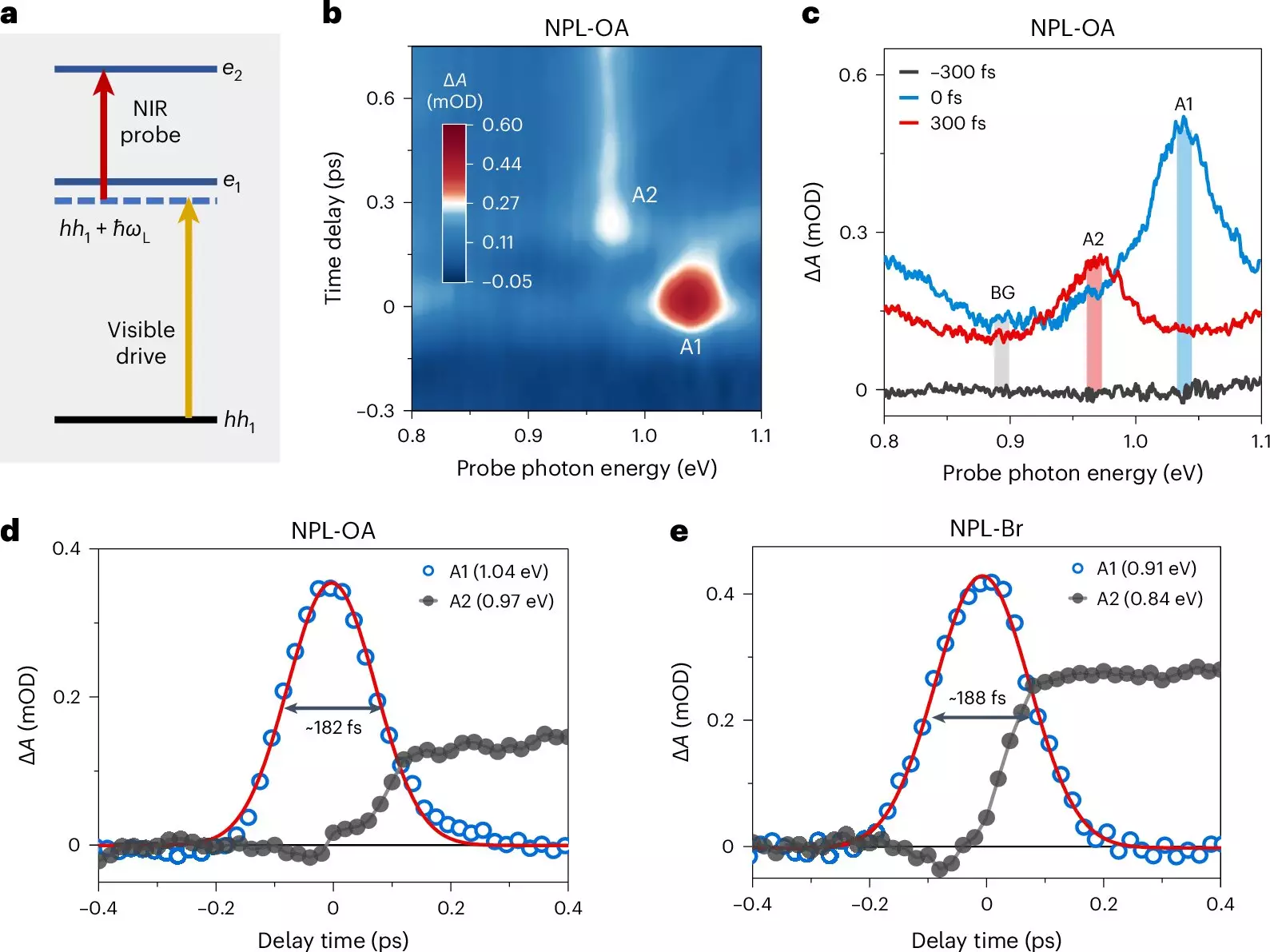Colloidal quantum dots (QDs), recognized as solution-processed semiconductor nanocrystals, represent a significant advancement in nanotechnology. These tiny structures illustrate the principles of quantum mechanics, particularly through their size-dependent optical properties, a phenomenon that has intrigued physicists for decades. Unlike bulk materials, where optical properties are relatively uniform, QDs exhibit distinct colors that vary with size, offering an immediate visual demonstration of quantum effects. This capability not only enhances our understanding of quantum mechanics but also paves the way for practical applications in photonics and optoelectronics.
Recent investigations into quantum phenomena utilizing QDs have unveiled compelling avenues for research. Scientists are particularly interested in features such as single-photon emission and the manipulation of quantum coherence, which are pivotal for the development of next-generation quantum technologies. A central concept in these studies is the idea of Floquet states—also known as photon-dressed states—that arise from the coherent interaction between light and matter. However, capturing these states in a laboratory setting has proven to be a substantial challenge, primarily due to the stringent conditions typically necessary for such observations.
Observational challenges related to Floquet states often arise from the need for low temperatures and high vacuum conditions. Previous experimental setups traditionally involved using mid-infrared pulses on materials like black phosphorus, a narrow-gap semiconductor. These setups required precise tuning of the driving fields to avoid damaging the samples. As such, much of the research surrounding Floquet states operated within a limited experimental ambit, thereby constraining the understanding of these phenomena under more accessible and practical conditions.
In a pivotal study published in *Nature Photonics*, researchers from the Dalian Institute of Chemical Physics led by Prof. Wu Kaifeng made a groundbreaking advance by successfully observing Floquet states under ambient conditions. This study utilized quasi-two-dimensional colloidal nanoplatelets that have gained prominence over the last decade. The unique structural features of these nanoplatelets, especially their strong quantum confinement, enable transitions within both interband and intersubband regions, allowing for a rich spectrum of optical responses.
One notable finding revealed that a sub-bandgap visible photon can interact with a heavy-hole state, effectively “dressing” it to form a Floquet state. This state can then be accessed using another near-infrared photon, illustrating a dynamic three-level system in action. The research demonstrated that even outside the expected temporal overlap of pump and probe pulses, such Floquet states can dephase into real populations—offering new insights into the temporal dynamics of quantum states, which occur within hundreds of femtoseconds.
Prof. Wu’s assessment of these findings underscores the significance of this research. The successful observation of Floquet states in colloidal materials under normal environmental conditions not only broadens the understanding of spectral dynamics but also suggests practical implications for controlling optical responses in condensed matter systems. This development heralds a new era of Floquet engineering, extending its potential applications beyond traditional solid-state materials to areas such as surface and interfacial chemical reactions through innovative use of nonresonant light fields.
The implications of these discoveries are vast, potentially influencing a variety of technologies ranging from solar cells to quantum computing. As researchers build on this foundation, the ability to control quantum states dynamically could lead to significant advancements in material science and photonics.
The study conducted by Prof. Wu and his team marks a crucial milestone in the field of quantum state observation. By harnessing colloidal quantum dots in less restrictive conditions than previously required, this research opens new doorways for experimental physicists and materials scientists alike. The findings demonstrate not just the feasibility of observing complicated quantum states but also their potential contribution to various advanced technologies, suggesting a bright future in the investigative realm of quantum mechanics. As we stand on the brink of this new frontier, the implications of such research will undoubtedly resonate throughout the scientific community and beyond.


Leave a Reply